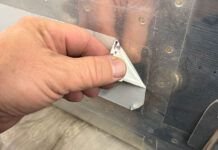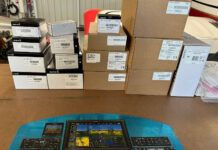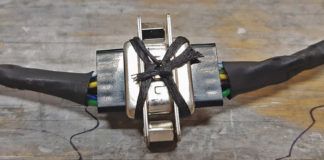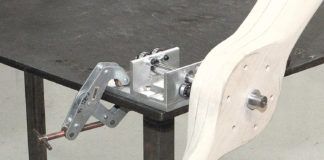
Throughout the history of places where pilots gather—be it a hangar, lounge or friendly saloon—one thing has always held true: the old saying that “the first liar doesn’t stand a chance!” It seems to be ingrained in the pilot psyche, along with the Type A personality and the need to show our superiority in all things.
In case you’re not yet familiar, it works like this. Pilot A walks into the pilot lounge, pours a cup of coffee, and sits down at the table. (We’ll use Pilot A, Pilot B and so on to keep real names out of the column. For now.) “Well, I just got back from checking out the new intake ramp I installed in my Flivver 2000, and dang, I think I gained two and a half mph at the top end!” Obviously excited by this increase, he continues, “I was indicating 173 at 8000 feet, and my fuel flow was only 8.5 gph—going faster and saving gas—this is great!”
Pilot B, sitting over on the couch and nursing his own cup of coffee—probably his second, as he’s known to get to the lounge early—pipes in, “Well that sounds like a definite win, but you know, I’ve been going 175 for years in my Flivver and only burning about 8.2 doing it. It sounds like your intake got you moving in the right direction, but there’s still more to get out of that airframe, I can tell you!”
Just then, the door to the men’s room opens, accompanied by a flushing sound, and Pilot C walks out, adjusting his trousers and headed toward the coffee pot for a reload. Owing to the paper-thin walls and doors of the typical lounge, he’s been following the entire conversation. “Well, heck, guys, I’ve been seeing 183 for years on my Flivver—I don’t know what’s keeping you so slow! Have you tried leaning for best power? You know, you should be able to get more out of it if you adjust the cooling airflow.”
And so it goes. By citing actual numbers in his excited first statement, Pilot A has set himself up for a fall. It is far easier for the second liar to pipe up with numbers that are just a little bit better than those of the first. After all, a mile per hour here or there is hard to prove or disprove when you’re sitting on the ground.
Take It to the Shop
The First Liar rule doesn’t just apply to flying, of course. There are ample opportunities to exploit it in the building phase in which many of us are continuously immersed. For instance, think about the selection of products for our airplane.
“I’m really happy how well that stock fuel pump from Easy Flow worked—it pumps just fine, fits where it was designed to and the cost was really economical!” Pilot A has no idea of the shaky ground he’s just stepped onto.
“Well if you want to go stock, I suppose it’s OK. But you know, those things are only designed to work for about 2000 hours, and then you’ll have to replace it. I went with the upgraded pump from Advanced Hydrodynamics, and even though it cost twice as much, it’s supposed to last twice as long, and the case is stainless steel, so I never have to worry about corrosion.” Pilot B knows how to lay it on thick, but not too thick.
Then comes Pilot C. “Boy, you guys have really missed the boat. My Flow Wiz 3000 pump is made of titanium, with sintered impellers so that the fuel flow stays laminar through the entire pump. It’s got nitride-coated fittings for easy on/easy off. And they only make about 10 of them a year, since they have to grow the windings in a special crystal tank that requires absolutely perfect temperature control throughout the three-week process. I’ve never heard a fuel pump that was so smooth and quiet! Yeah, it costs three times what you spent on the Hydrodynamics pump, but after all, it is your fuel pump!”
See? The rule of the First Liar is alive and well, and while talking speed only affects your ego, when it comes to selecting equipment, it can be a big hit to your pocketbook! But it gets even better—it can directly challenge your manhood when the talk turns to building techniques.
Pilot A again. “Wow—I just discovered how easy it is to squeeze rivets with a pneumatic tool—they all turn out so great—this is going to be my main tool from now on!”
Not good enough for Pilot B. “Well, yeah, almost anyone can use a pneumatic squeezer, but you know, if you use a manual squeezer, like I did (on every rivet), you get much better control and can set each one perfectly. And if they aren’t perfect (I use a micrometer on each one), you’ll want to drill them out and start over!”
“I suppose squeezing is OK, but you know, rivets were meant to be driven. Ever seen a micrograph of rivets that have been squeezed and ones that were driven, and then they were cut open? You’ll see the crystallization is different, and you know, if it’s an airplane I am flying in, I’d like that material to be perfectly uniform.” Pilot C needs to switch to decaf. Today.
“Well geez, guys, you can squeeze or drive—that’s fine. But if you aren’t heat-treating the rivets and then annealing them per the mil spec before you use them, what’s the point? I make up a batch of rivets in the oven before each build session, just to make sure….” Hey, when did Pilot D get here?
Real Advice
No matter what you decide to say, someone is going to top it. To paraphrase that old movie about computers and nuclear war “What an interesting game—the only way to win is not to play!”
In fact, the guys I look for when I need advice are the quiet ones in the corner—the ones that sit with their coffee cup and just smile as the conversation goes around the room. Generally speaking, these are the old timers that have been flying and building for a couple of generations, and they’ve gone past the point of having anything to prove. They know how to fly, they know how to build and they know what performance really means. They also know that in most cases, all of these arguments don’t amount to a hill of beans. Most important, they know the internet is not a consistently reliable resource.
So they stay quiet unless a safety rule appears to be violated, in which case they’ll make a brief, on point and totally obvious observation to keep the new guys from killing themselves. They know all too well not to get into the game of Liar Poker—they’ve won their share of hands in the past and knew when it was time to get out of the game.













